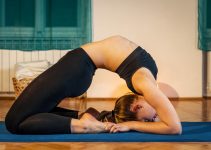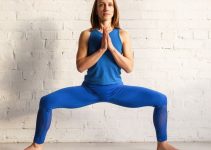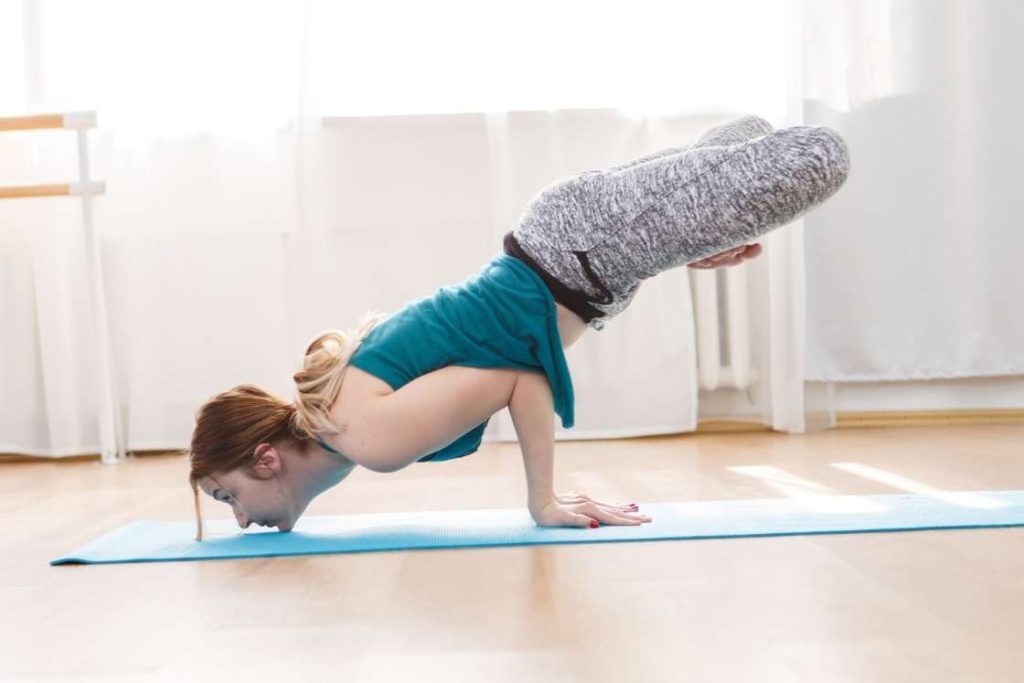
| Sanskrit Pronunciation | Padma Mayurasana (pahd-mah my-yur-AHS-anna) |
| Meaning | Padma = Lotus / Mayur = Peacock / asana = pose |
| Pose Type | Balancing and Forward Bending |
| Pose Level | Advanced pose |
| Stretches | Abdominal Muscles, hips, knees, thighs, neck, wrist, palms, forearms, and shoulder |
| Other Names | Lotus in Peacock Pose, the legs crossed as in Lotus Position, Padma Mayurasana |
Padma Mayurasana is an easier preparatory variation of Mayurasana. In this asana, the folded legs represent Lotus and the lifted body on two arms depicts Mayur or Peacock. Hence, it’s called Lotus in Peacock Pose.
Balancing in Padma Mayurasana requires strength in the wrist, Forearms, shoulder, and power of core muscles. It helps in developing the musculoskeletal aspects of the practitioners along with balancing. Moreover, it ensures better functioning of the internal organs.
Padma Mayurasana – Padmasana + Mayurasana
The combination of the two species makes Padma Mayurasana different from others. The Lotus and the Peacock affect the practitioner’s body in various positive ways. Lotus is believed to be the symbol of enlightenment, purity, and rebirth, which dispels negative thoughts and purifies the spirit of the practitioners. This further leads to the spiritual path and becomes the reason for the enlightenment, which clears all the darkness and ignorance that gives birth to sufferings. Hence, Life becomes harmonious and happy.
As per the ancient Egyptian ideologies, the Lotus flower has magical properties, which have the ability to resurrect the deceased, as seen in the Book of the Dead Transformation of the Spells.
Whereas, the Peacock signifies the symbol of guidance, protection, and watchfulness. Therefore, the Mayurasana not only develops these abilities to make one more aware during the practice but also trains the mind and the body to cope with the various challenges of life.
Practice Guide to the Padma Mayurasana
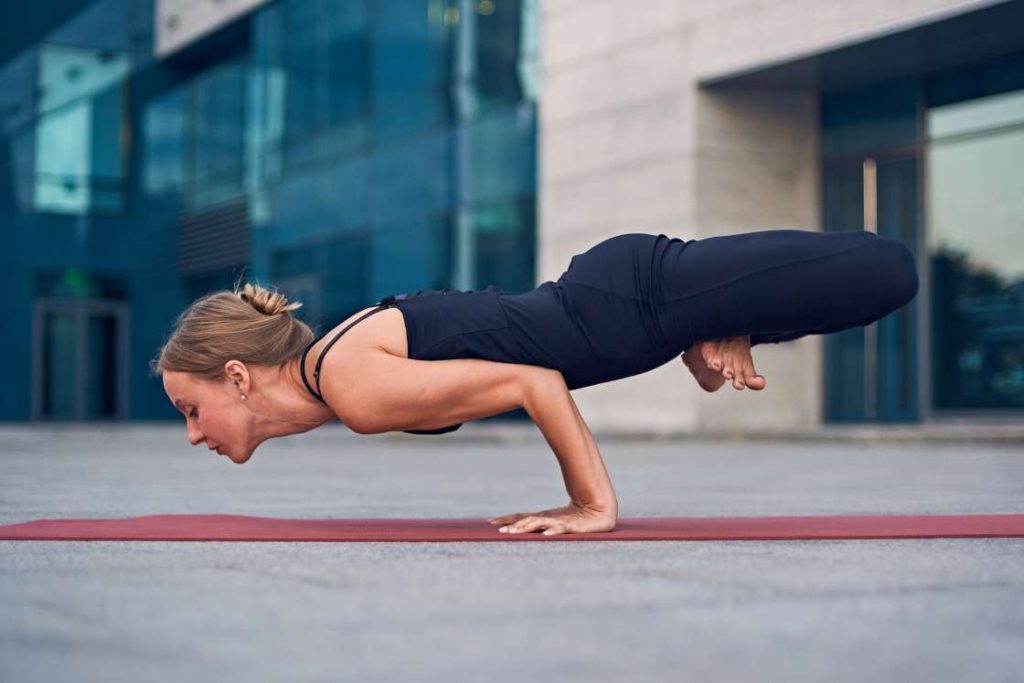
Follow the guide below to begin the Padma Mayurasana
Contraindications
Padma Mayurasana should not be done in the condition of the wrist, shoulder, elbows, and spinal injury. Also, pregnant women, individuals who have undergone stomach surgery, have high blood pressure and asthma should avoid this pose.
Preparatory Poses
Padma Mayurasana Steps
- Begin by coming into the dandasana where your legs and back remain erect. Breathe normally here.
- Now, lift your right foot and place it on the left thigh, then lift your left foot and place it on the right thigh. This completes the Padmasana.
- From padmasana, walk your hand in front to bend forward and stand on your knees in Padmasana. Your fingers of the hand pointing backward.
- Now, bend your elbows by bringing them together and lean forward to place them on the center of the abdomen or near the naval region.
- Try to lean a bit more in the forwarding direction so that your upper arms rest your torso. Then inhale to lift your legs in padmasana by engaging your core and pushing against the floor through your hands.
- Maintain here for as long as possible and then slowly drop your Padmasana, then lean back to sit in Padmasana, and then finally into Dandasana.
Follow Up Poses
- Bhujapidasana (Shoulder Pressing Pose)
- Chaturanga Dandasana (Four Limbed Staff Pose)
- Child Pose (Balasana)
Precautions
- In padma mayurasana, avoid balancing while bending forward in padmasana due to the folded legs. Any mishappening might result in knee, spinal, and lower back injuries.
- Practitioners should not displace their hand positioning too away from the center. This could cause it to fall forward. One should keep an angle of 90 degrees at their elbows to get a good balance at the center.
- While in the final pose, practitioners should avoid dropping their heads, which could decrease the energy from the pose. Keep your head lifted and neck flexed to maintain the power in the pose.
Beginners Tips
- Beginners should first try to achieve mastery in padmasana before Padma Mayurasana because due to stiffening there might be difficulty in knees to heighten the challenge in Padma Mayurasana.
- Due to a lack of core strength and flexibility in the lower back and spine, there might be difficulty in raising the padmasana formed by the folding of legs. So, the beginners should work on their respective body parts first to perform well in Padma Mayurasana.
- Beginners should firm their hand so well on the ground and elbows close to support the lower body while lifting. This will decrease the chances of injury due to loosening the body.
- Using appropriate props in padma mayurasana can help beginners;
Props and Modifications
- Practitioners who are unable to lift their bodies properly in padma mayurasana can put blocks under their hands for the necessary elevation. It will assist in maintaining the posture.
- In order to avoid the head in the condition of misplacement of the hands. Practitioners can place a bolster or blanket under their head, which could prevent injuries due to falling.
- Practitioners who are able to reach the final position, but unable to keep it for a few seconds, can take the help of some other person or chair support to rest upon.
Variations
Padma Mayurasana has some of the variations which can be performed to widen your practice. So, the practitioners go through the following variations one by one;
1. Pungu Mayurasana Padmasana (Wounded Peacock Pose)
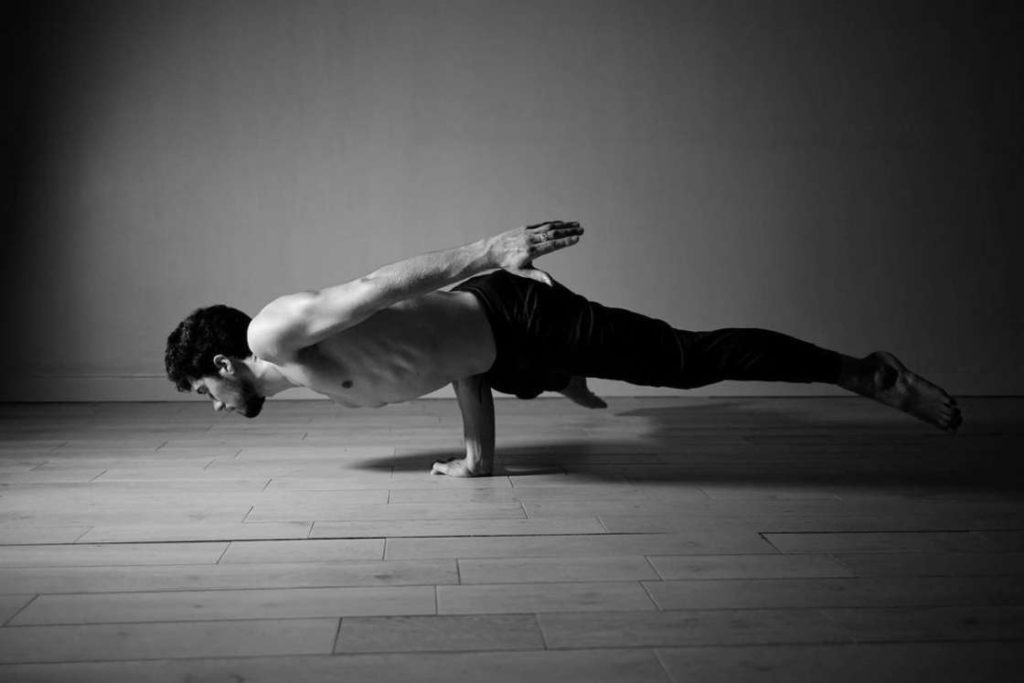
In pungu mayurasana, the body is supported over the one hand placed beside the navel. One hand is kept in the air while the legs straighten and the body lean forward.
Begin by coming into the Vajrasana and then spread your knees to place your right hand between your fingers facing outward. Return knees to the previous position to place their left hand forward on the floor. Bend your right elbow and place it under the navel. Now, straight up legs and come on toes while the left hand becomes straight. After, try to lean forward and slowly shift your body weight in a forwarding direction and lift the toes up to balance the body. Maintain here for some time and then come back by dropping toes, knees, and then left hand.
2. Uttana Padma Mayurasana
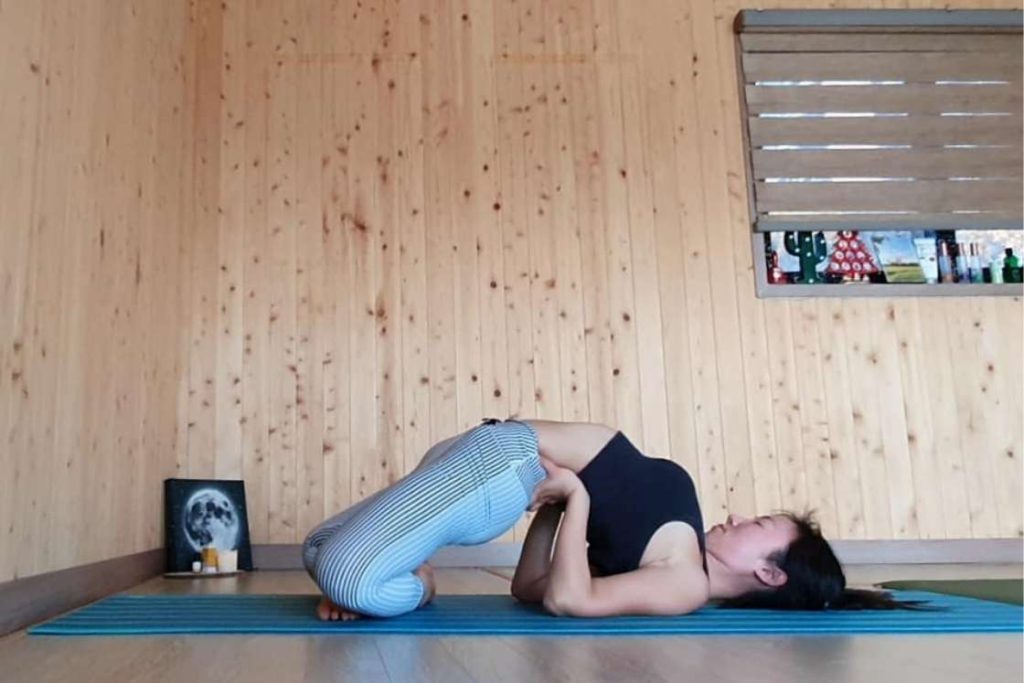
3. Uttana Padma Mayurasana
Uttana Padma Mayurasana is a supine variation of Padma Mayurasana where the lower back is elevated by the support of both hands while legs remain in the lotus pose.
This pose can be assumed by coming into the Sarvangasana. Then the legs are bound into the padmasana legs while both hands support the back by placing hands around the waist. Finally, padmasana legs are lowered down, knees touching the ground. This is the final position of Uttana Padma Mayurasana.
Therapeutic Benefits
Padma Mayurasana can be used for therapeutic purposes in the following physical conditions;
- In this pose, the pressure against the upper arm faced by the stomach stimulates the bowel movements in the smaller and larger intestine. It makes Padma mayurasana one of the good yoga poses for constipation.
- A skin infection starts in a hair follicle or oil gland, which on course turns into a lump with pus. Practicing Mayurasana increased the blood flow to the affected areas, which may lead to faster recovery along with the reduction in inflammation.
Padma Mayurasana Benefits
Padma Mayurasana benefits against various body illnesses concerning digestive, excretory, and reproductive as well. Hence, it can be practiced for their complete eradication.
1. Improves Digestion
The pressure faced by the abdominal regions while balancing the Padma Mayurasana causes stimulation of digestive organs. This helps in digestive secretion in better amounts and ensures optimum digestion. Hence, in this way it improves digestion.
2. Helps in Spleen Enlargement
Unhealthy eating lays stress on the liver to work upon food hard to digest. This on prolong makes the liver weak and prone to infection, which results in an enlarged spleen and causes anemia, bleeding, and pain behind the ribs. However, the practice of Padma Mayurasana overcomes the condition of regular practice and also reduces the symptoms.
3. Improves Cognitive Functions
Regular practice of Padma Mayurasana helps in stimulating the various parts of the body, the brain’s frontal lobe is one of them responsible for Cognitive activities. According to one of the studies [efn_note] Cognitive Behavior Evaluation Based on Physiological Parameters among Young Healthy Subjects with Yoga as Intervention https://www.hindawi.com/journals/cmmm/2015/821061/ [/efn_note], it has been found that, regular practice of this asana helps in significant improvement in various cognitive functions, such as performance enhancement, neural activity, attention, and executive function.
4. Detoxifies Blood
The liver plays the most significant role in cleansing the blood. Massaging while practicing the Padma Mayurasana helps the liver in ensuring its optimum state of functioning, which not only filters toxins and unwanted byproducts from the blood but also pulls nutrients from it to deliver to the body. The liver converts waste into relatively harmless substances that it then releases from the body.
5. Reduces Diabetes
The elbows attached to each other rest or massages against the navel region, which is the position where the pancreas is located or in front of the spine. Regular practice of Padma mayurasana stimulates this gland to secrete insulin hormone, which helps in managing the blood glucose level. Hence, reduced diabetes.
6. Reduces Cough Problems
A cough is a respiratory tract infection, such as a cold or flu, which causes discomfort in breathing sometimes and affects mind and body balance. As per one of the studies [efn_note] A Survey on Efficacy of B.K.S Iyenger Yoga for Cough https://ejmcm.com/article_5118.html [/efn_note], Practicing one of the variations of Padma Mayurasana has positive effects on cough problems. Hence, helps in the reduction of it.
Conclusion
The Padma Mayurasana is an advanced pose that strengthens various muscles and bones that stabilizes the basic framework of the body. It helps in detoxification and digestion and acts as a therapeutic aid for many ailments.
The practitioners can practice this asana by putting continuous effort due the high demand of strength and focus required by this asana.

